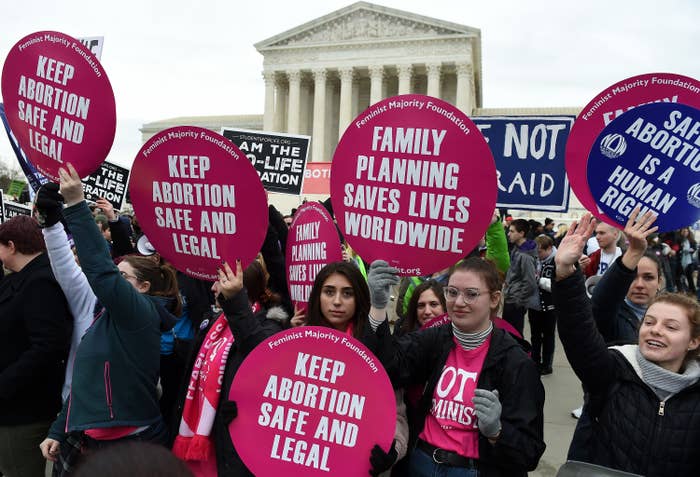
This is a really confusing time. BuzzFeed News is working to answer some of your burning questions leading up to the election. Have a question you want answered? Email addy.baird@buzzfeed.com
WASHINGTON — Last month, during an appearance on Fox News, President Donald Trump said that it is “certainly possible” that his new Supreme Court nominee Amy Coney Barrett will be part of a decision that could restrict or overturn abortion rights in the United States.
“We’ll have to see how that all works out, but I think it will work out. … Maybe they do it in a different way. Maybe they’d give it back to the states. You just don’t know what’s going to happen,” Trump said.
Trump has consistently said that justices he appoints to the Supreme Court will vote to overturn Roe v. Wade, the 1973 decision that made abortion legal in the United States. In 2016, he said that if he appointed enough justices, overturning Roe “will happen, automatically in my opinion.”
If Barrett becomes Trump’s third Supreme Court justice, as she likely will be, it’s certainly possible the court could overturn the landmark ruling. But the national right to abortion will not “automatically” go away.
With Barrett on the court, Republicans will have appointed six of the nine current justices. While they don’t always vote together, those justices could rule in an abortion-related case to restrict access to the procedure or overturn Roe entirely.
There are, according to Planned Parenthood, 17 abortion cases currently just one step away from the Supreme Court. The cases include a litany of different state restrictions on abortion, including a Texas law that would require burial or cremation of fetal tissue, an Indiana law that requires people under 18 to get the written consent of a parent in order to get an abortion, and state bans on abortion after 20 weeks, 15 weeks, and even 6 weeks of pregnancy, before many women even know they’re pregnant. Should any one of the cases make its way to the Supreme Court, the justices could rule that there is no national right to abortion and overturn Roe.
But if Roe is overturned, abortion won’t just be illegal nationwide. It would then be up to individual states to decide whether to outlaw abortion. In places like California and New York, where the state legislature last year passed a bill expanding abortion rights in the state, abortion will remain legal and accessible.
But according to the Guttmacher Institute, a pro–abortion rights organization, nearly two dozen states have laws on the books that could restrict abortion almost immediately after Roe is overturned. Ten states have “trigger laws” that would ban all or almost all abortions if Roe was reversed, and another nine states have abortion restrictions currently blocked by the courts that could take effect without Roe. Without Roe, abortion rights would be a national patchwork, and states with stronger abortion rights laws would likely see an influx of out-of-state visitors seeking an abortion.
What many experts believe is likelier than a total reversal of Roe, though, is that the Supreme Court will continue to uphold laws that chip away at abortion rights. That’s because perhaps the most important guiding principle for the Supreme Court is “stare decisis,” which just means respecting the precedent set by earlier Supreme Court decisions. Upholding abortion restrictions but not overturning Roe itself could mean that hundreds of thousands of people in the US don’t have access to abortion, despite the fact that it’s technically still legal.
Already, many people are not able to access or afford the procedure, especially in states where tight restrictions have already been allowed to go into effect. As of last year, six states had just one abortion clinic, and the government bans the use of federal funds for abortions (under what’s known as the Hyde Amendment), which means people covered by Medicaid, government-funded health insurance, have no health coverage for the procedure except in rare circumstances.

